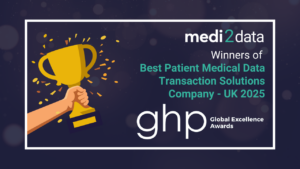A system in crisis
In 2015, the steadily increasing pressures on GPs hit crisis point. A decade of underfunding, reduced resources and an ageing population meant that the traditional care model was no longer working. The Making Time In General Practice study in 2015 was commissioned as part of the NHS Five Year Forward View to understand the scale of the crisis and help strengthen services across England.
The study identified that 18 per cent of GP appointments could be avoided if services were organised differently. Plus, GPs were dealing with a rising, more complex workload. There were new pressures, including getting paid, processing information from hospitals, keeping up to date with changes, information reporting, and supporting patients to navigate the health and care system.
NHS England launched the GP Access Fund to help practices adopt practical and innovative practices, such as working in clusters to provide 7-day access for patients, providing access to multi-disciplined teams, offering online consultations and adopting digital solutions to replace manual processes.
Five years on
Yet despite this and other initiatives, current-day workload and patient demand have reached unprecedented levels. Recent research by BMJ Open found average burnout scores among GPs are higher than those for any other medical specialty, other than emergency medicine.
According to the Primary Care Commission, GPs are still spending 11 per cent of their time on administrative tasks in addition to dealing with between 42-60 patient contacts per day.
The introduction of GDPR rules in May 2018 has meant that GPs and their staff are spending huge amounts of time copying and reviewing notes for Subject Access Requests, as well as medical and insurance reports. The majority of these reports are provided for free, and a GP must carefully read through bundles of paperwork and electronic records to ensure that no confidential third-party or harmful information is released. This whole process is a huge time drain for GPs and their staff, and since it’s launch, there has been a rise in requests.
The NHS long term plan hopes to remove some of the wider administrative load through the formation of Primary Care Networks (PCNs) to help practices recruit and retain staff, manage financial and estates pressures, provide a wider range of services to patients and more easily integrate with the wider health and care system. And the new five-year framework for the GP contract, published in January 2019, put a more formal structure around this way of working.
Looking for a better way
The BMA ‘Quality first’ campaign is vocal in its call for a reduction in bureaucracy which takes precious time away from direct clinical care. And there are a number of long-term measures that could be put in place in order to aid practices to reduce their workload and become sustainable, including increased patient self-care management and an increased skills mix in the practice and in the community.
But what can be done right now?
Trialling new technologies can be the quickest and most effective way to cut admin time, but is often met with resistance from over-worked staff who feel that new systems could be more hassle than they’re worth to set up, train staff, fix any teething problems, with no guarantee it will actually work.
GP IT Futures
The GP IT Futures programme aims to change that by allowing practices to benefit from the rapid evolution of technology, with the reassurance that all the suppliers on the programme have been rigorously assessed to make sure they meet the highest technical, safety and security standards while the software is simple to implement and use.
What this means for general practice is there will be access to a greater selection of modern digital tools and capabilities that are easier to find, understand and (where applicable) buy, that will help them become more effective in meeting the needs of patients.
Small changes can make a big difference
Practices don’t need to overhaul their entire process to make quick improvements. By trialling technologies to automate certain tasks within the practice, the admin overload can be dramatically reduced overnight. It just takes one first step to make the change.



